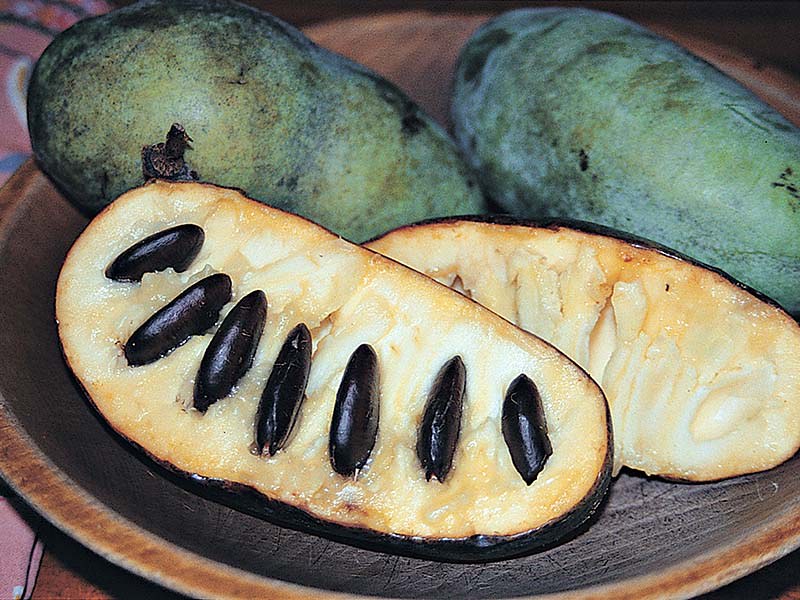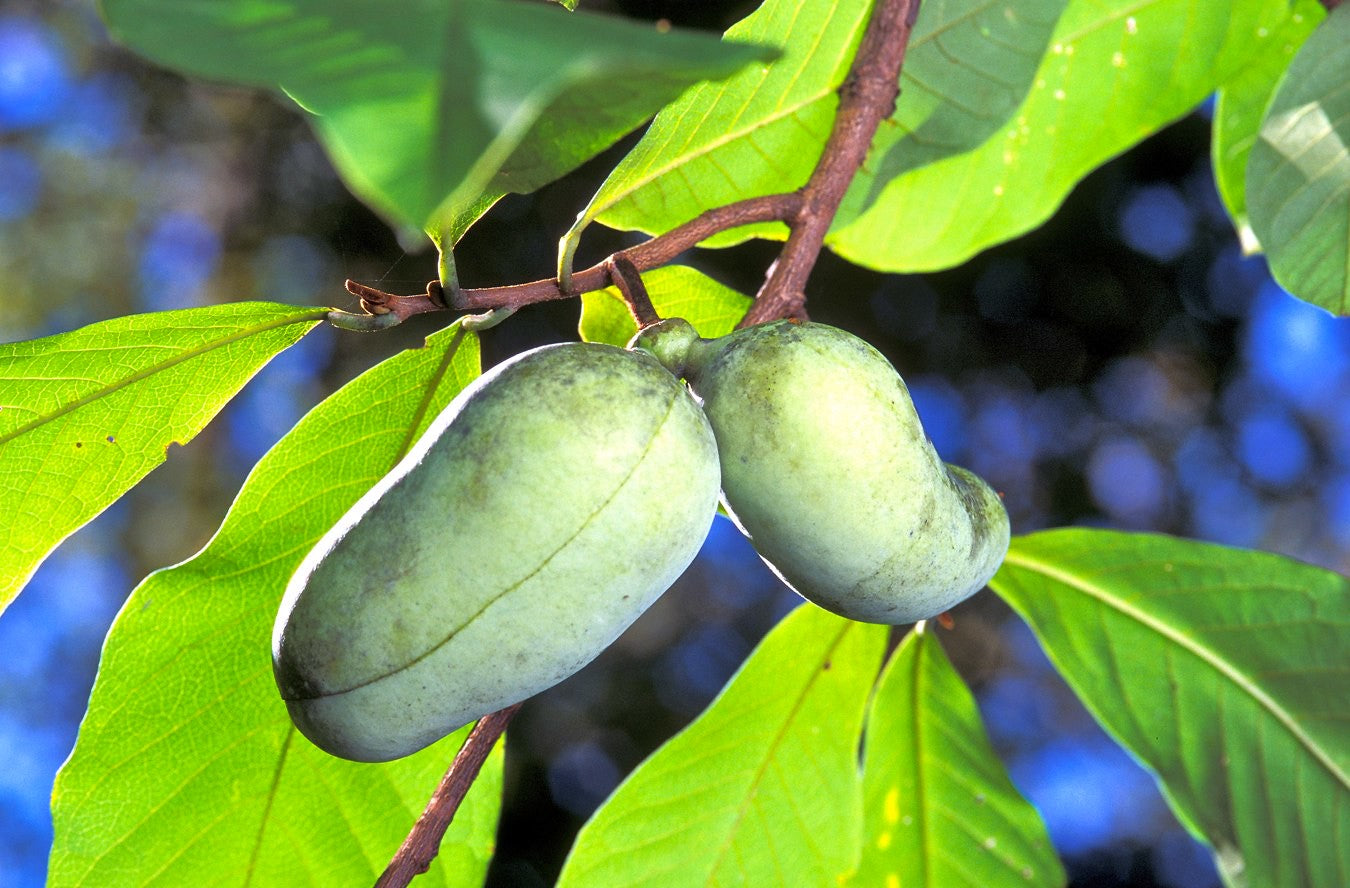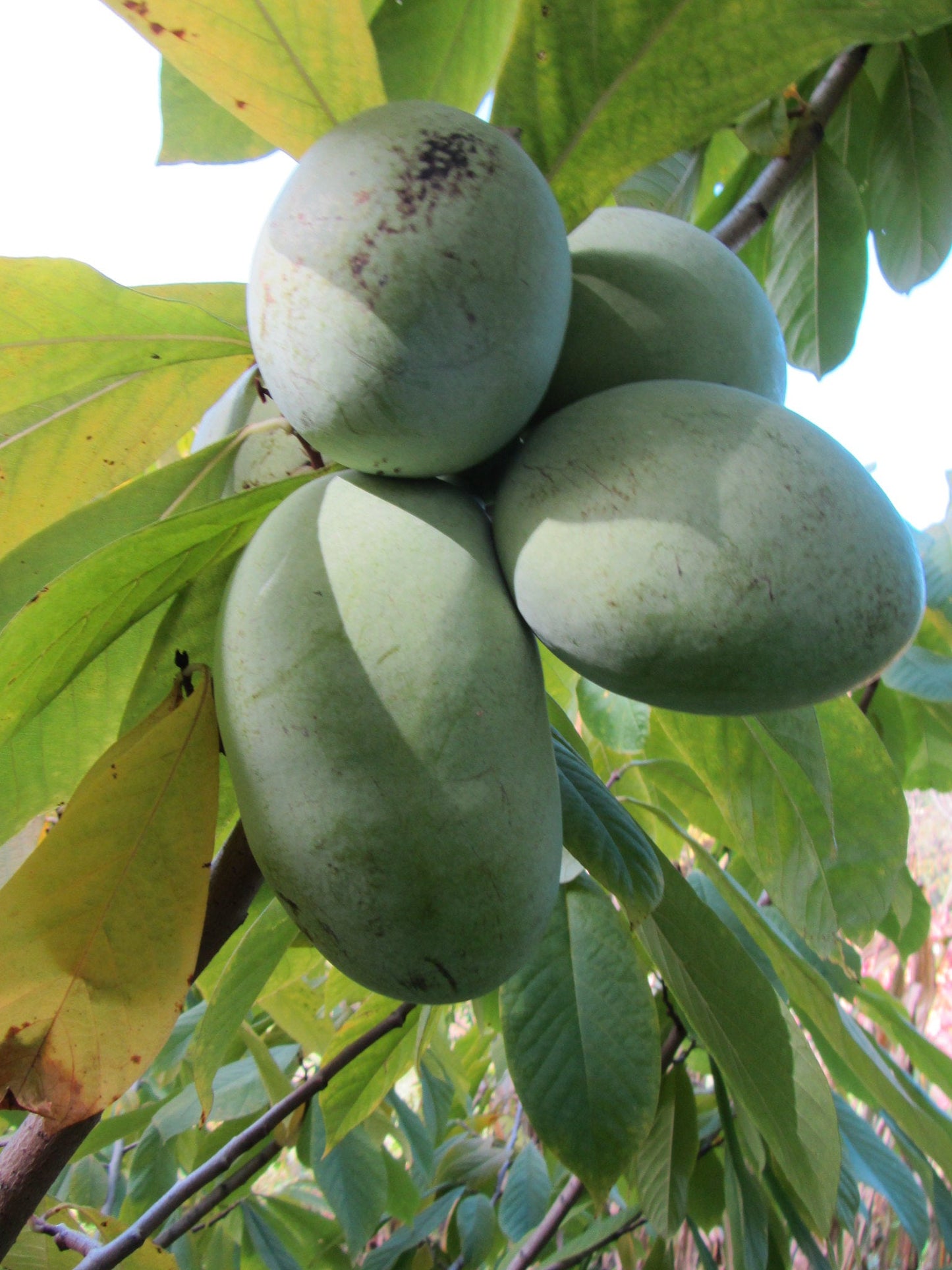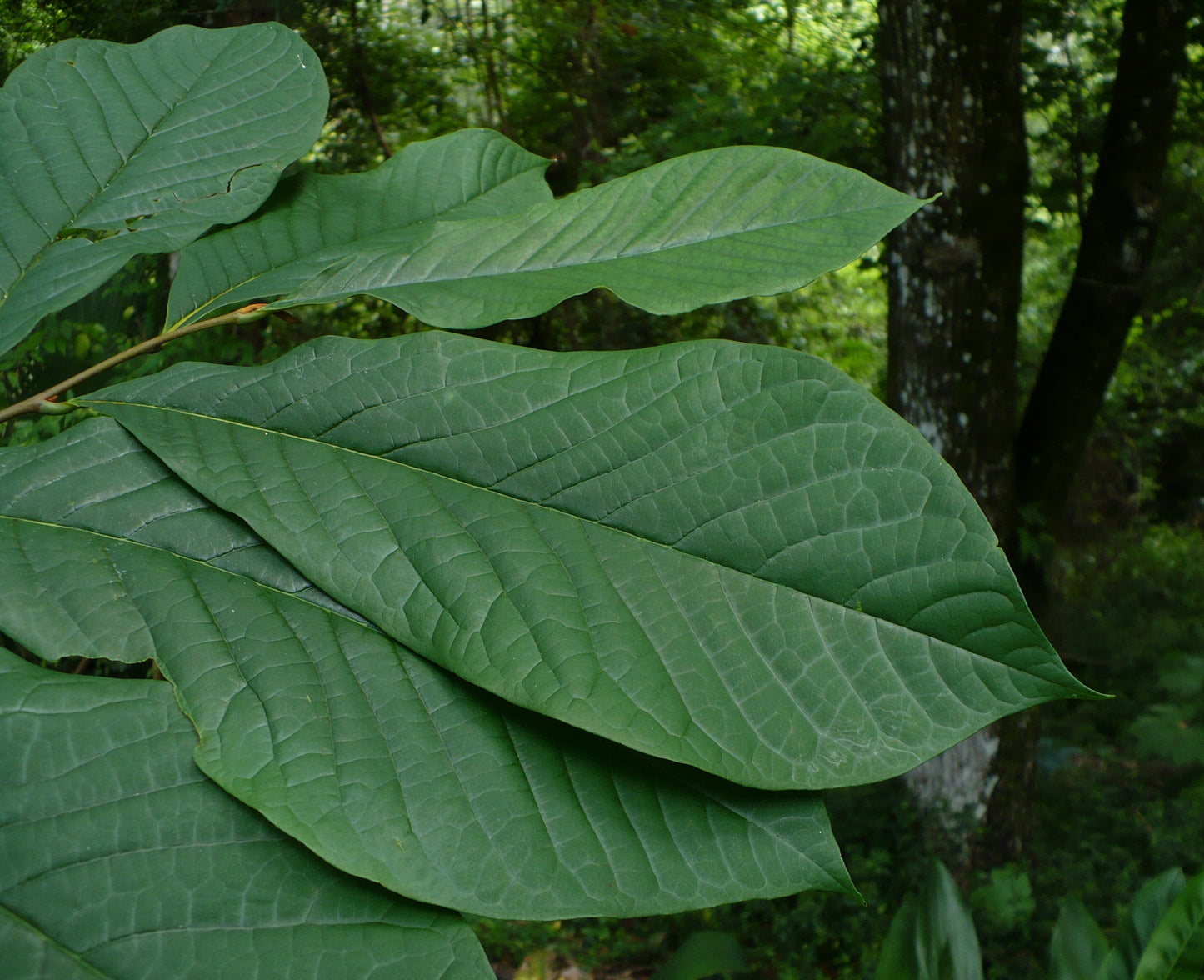Floridaseeds
Pawpaw Tree Asimina triloba 10 Seeds
Pawpaw Tree Asimina triloba 10 Seeds
Couldn't load pickup availability
The pawpaw is the largest member of a small genus of plants that are native the eastern North America. The genus, Asimina, is the only hardy genus of the Annonaceae. Most of the species occur in subtropical regions of the southeastern United States, mainly in Florida and Georgia. They are shrubs, subshrubs or rarely, small trees. Asimina triloba is much larger than the other species. The pawpaws are the only host plants of the Zebra swallowtail butterfly. It has a pyramidal form and horizontal or slightly ascending branches. The pawpaw grows 15-20' tall (sometimes to 30'). It often spreads by root suckers to form colonies or thickets. Large, slightly drooping, elliptical, medium green leaves (6-12" long) retain green color well into fall before turning to a bright yellow. Cup-shaped, purple flowers (3 green sepals and 6 purple petals in two tiers) appear in spring, and give way to edible, oblong, yellowish green fruits which mature in early autumn to a dark brown. Flavor and fleshy consistency of the sweet-flavored fruits resembles bananas. Fruits are frequently eaten raw or used in ice creams or pies. Wildlife (e.g., raccoons, squirrels and opossums) eagerly seek out the fruits and often beat humans to the harvest. Early Americans made a yellow dye from the pulp of the ripened fruit.
Asimina triloba is a good tree for a small garden, a shade garden and a native plant garden and in butterfly gardens. It can be used in naturalizing, in shrub borders and in wet areas along pods and streams. It can be grown where a tropical look is desired in a garden. Easily grown in average, medium to wet, well-drained soil in full sun to part shade. Prefers moist, acidic, fertile soils. It has a taproot and does not transplant well so it is better to plant the seeds where they are to grow or plant them in a large container until they are large enough to plant in the ground. Hardy in zones 5-9.
Growing Instructions for the Pawpaw Tree
The seeds have a period of dormancy and need to be cold stratified to break their dormancy. The seeds are stored in a refrigerator to maintain viability so they have already been stratified. The seeds need to be planted when received or stored in a refrigerator until they are planted. 1. Fill a pot with potting soil. Use a pot that has drainage holes in the base. 2. Sow the seeds on the soil and cover them with a thin layer of soil. 3. Water the container and leave it to drain. 4. Put the pot in a warm, sunny area. 5. Water the pot regularly so that the soil is moist but not wet. The seed will normally germinate in 2-3 weeks, and the shoot will emerge in 2 weeks to 2 months. 6. The seedlings can be transplanted when they are a few inches tall.





















